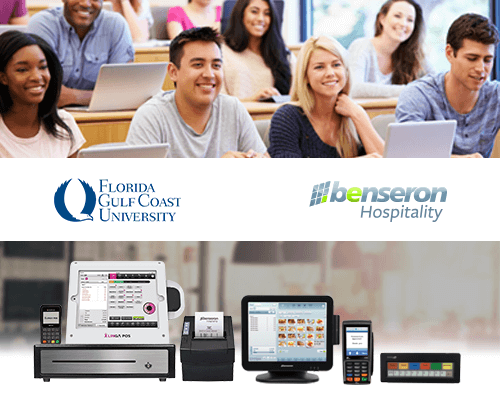
Leading Point of Sales software helps students learn inventory control, restaurant front and back office management.
NAPLES, FLORIDA (PRWEB) September 29, 2017
— Linga POS™ by Benseron Hospitality, the leading iPad-based point of sale and restaurant management solution has been adopted by the Resort and Hospitality degree program of Florida Gulf Coast University. FGCU will leverage the state-of-the-art point of sale solution to train students in modern day inventory control, table and bar management, online ordering, and restaurant front and back office management.
“To provide our students with cutting-edge learning experiences inclusive of critical thinking coupled with a simulated business application we looked at the Linga POS solution as a valuable learning tool,” says Dr. Randy Upchurch, Director, School of Resort & Hospitality Management. “This system offers the latest cloud-based food & beverage architecture, and provides an experiential approach to the business processes germane to food and beverage operations.”
“The Linga POS™ system is an always-on solution that can be easily customized for all restaurant and bar segments, including quick serve, full service, fine dining, bars, pizzerias, and large franchise chains,” says Onur Haytac, CEO of Benseron Hospitality. “The flexibility makes it ideal for ensuring students are familiar with multiple restaurant models, and can smoothly transition into a career opportunity with hands-on knowledge of the latest POS technology, analytics, and dashboards.”
ABOUT FLORIDA GULF COAST UNIVERSITY
Florida Gulf Coast University offers a comprehensive Resort & Hospitality Management program. The curriculum, developed by academic and industry leaders, is uniquely focused on the essential knowledge needed to manage the complex operations of multimillion-dollar resort and private club properties. The major is the university’s fastest growing academic program.
Lutgert College of Business
Florida Gulf Coast University
Dr. Randall S. Upchurch
Director, Resort & Hospitality Management
Office: 239-590-7319
Email: [email protected]

